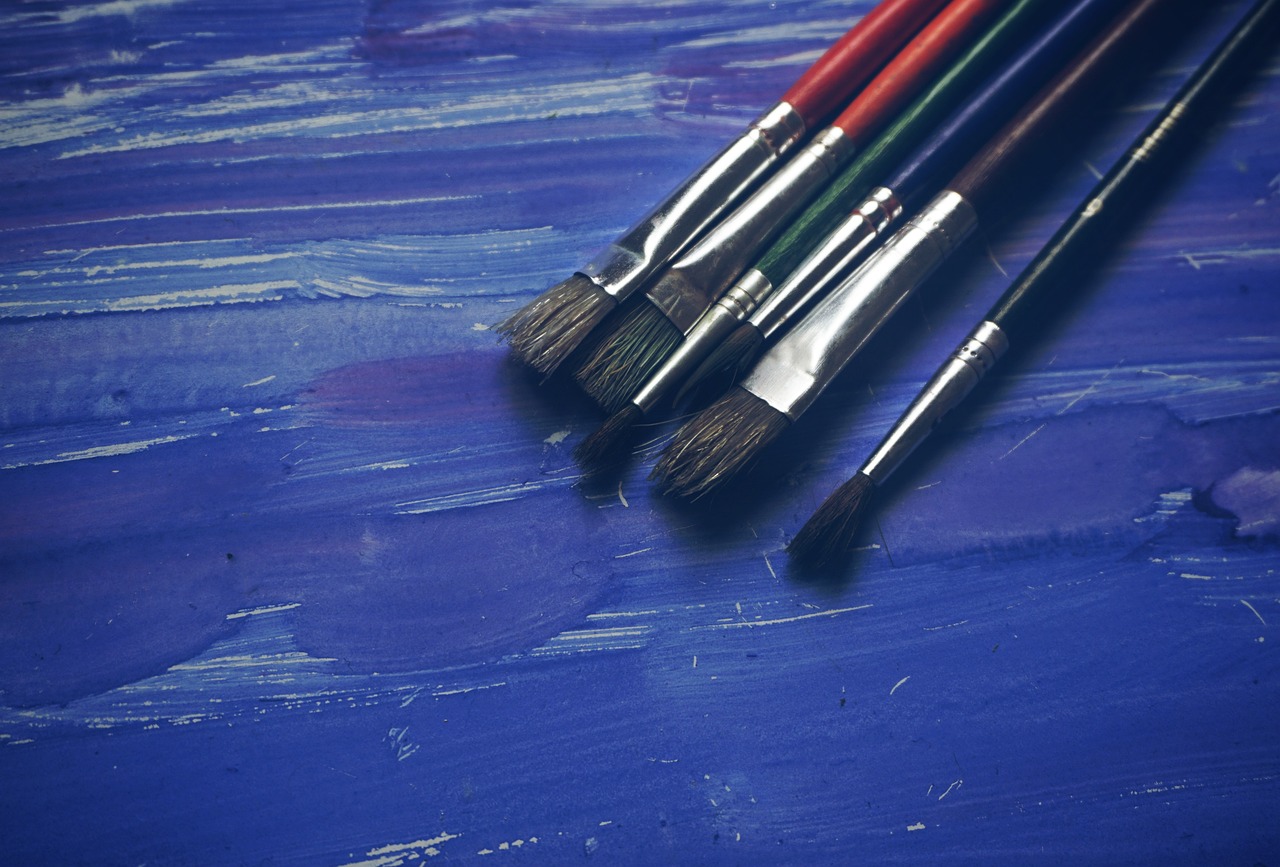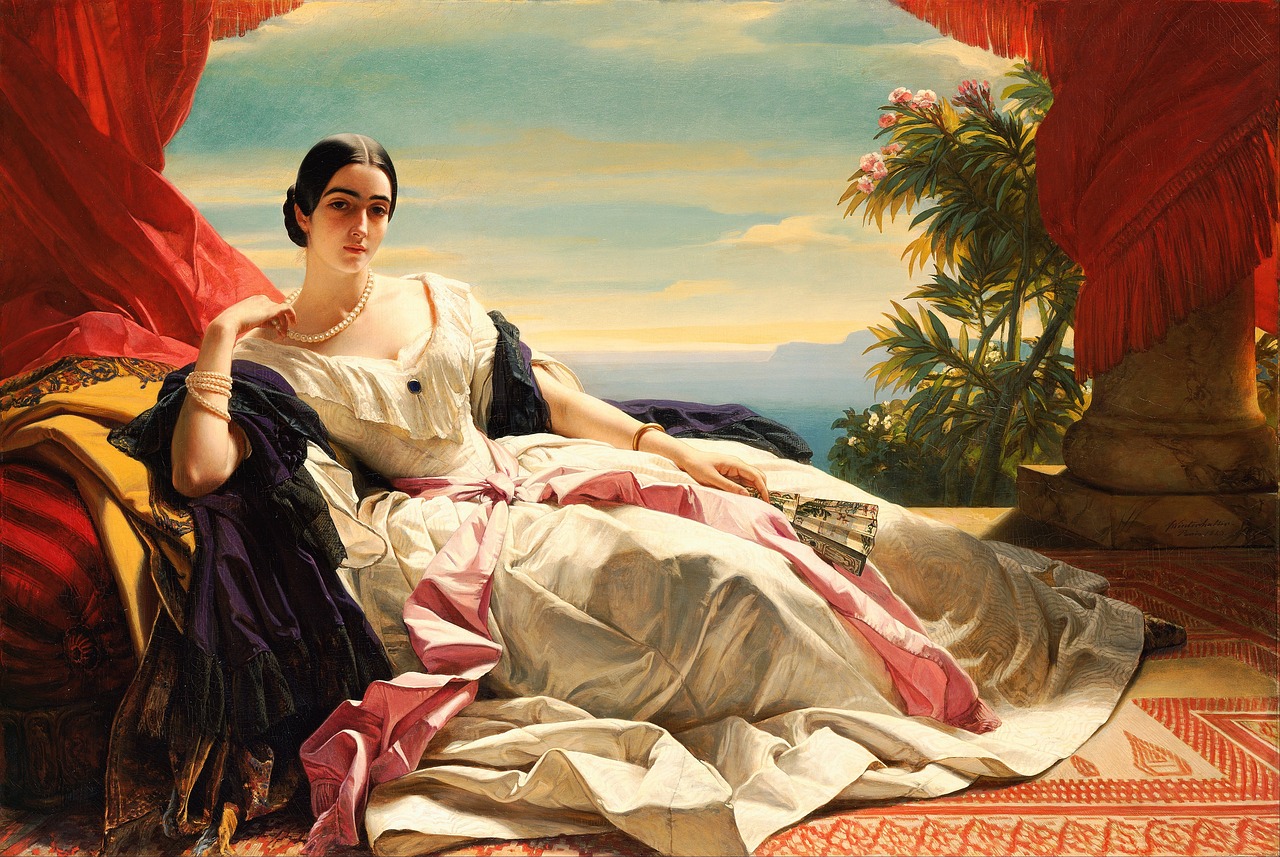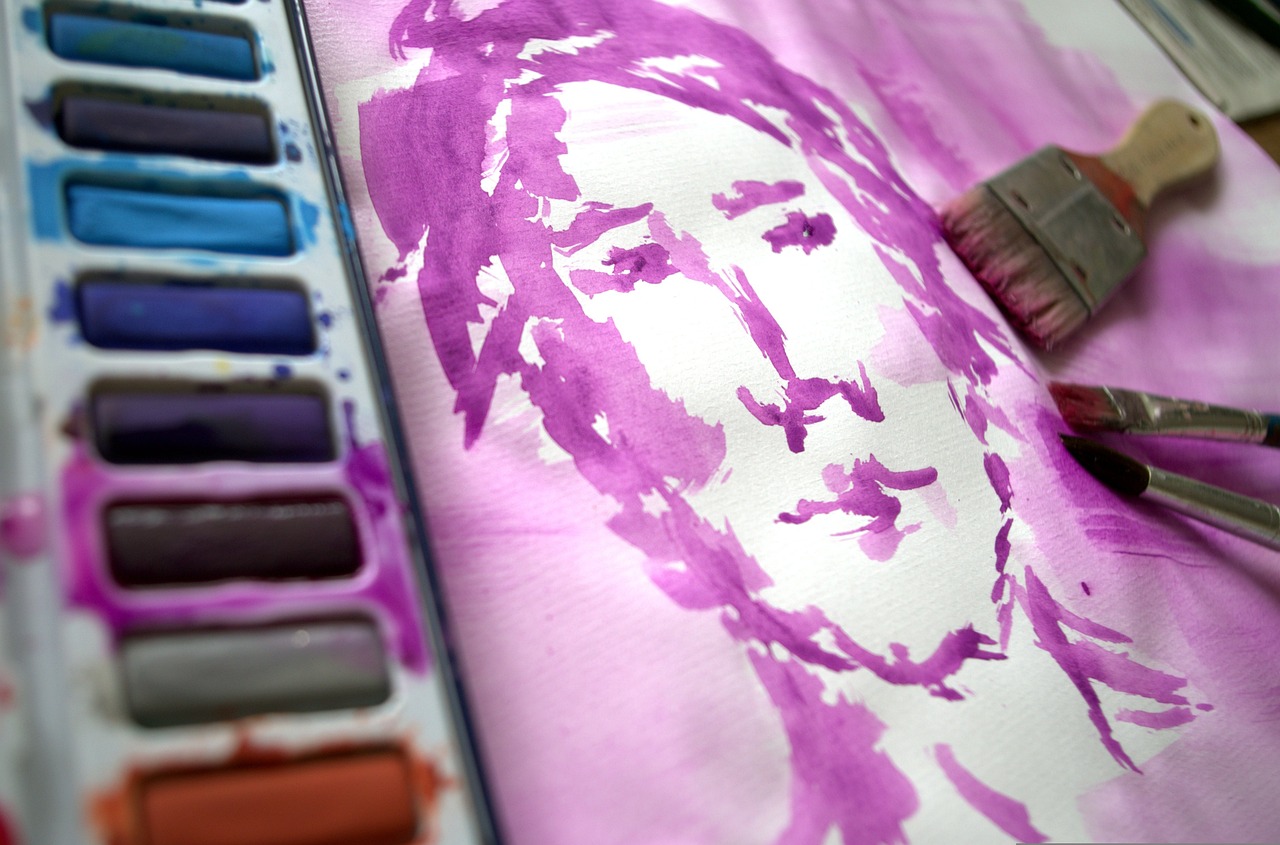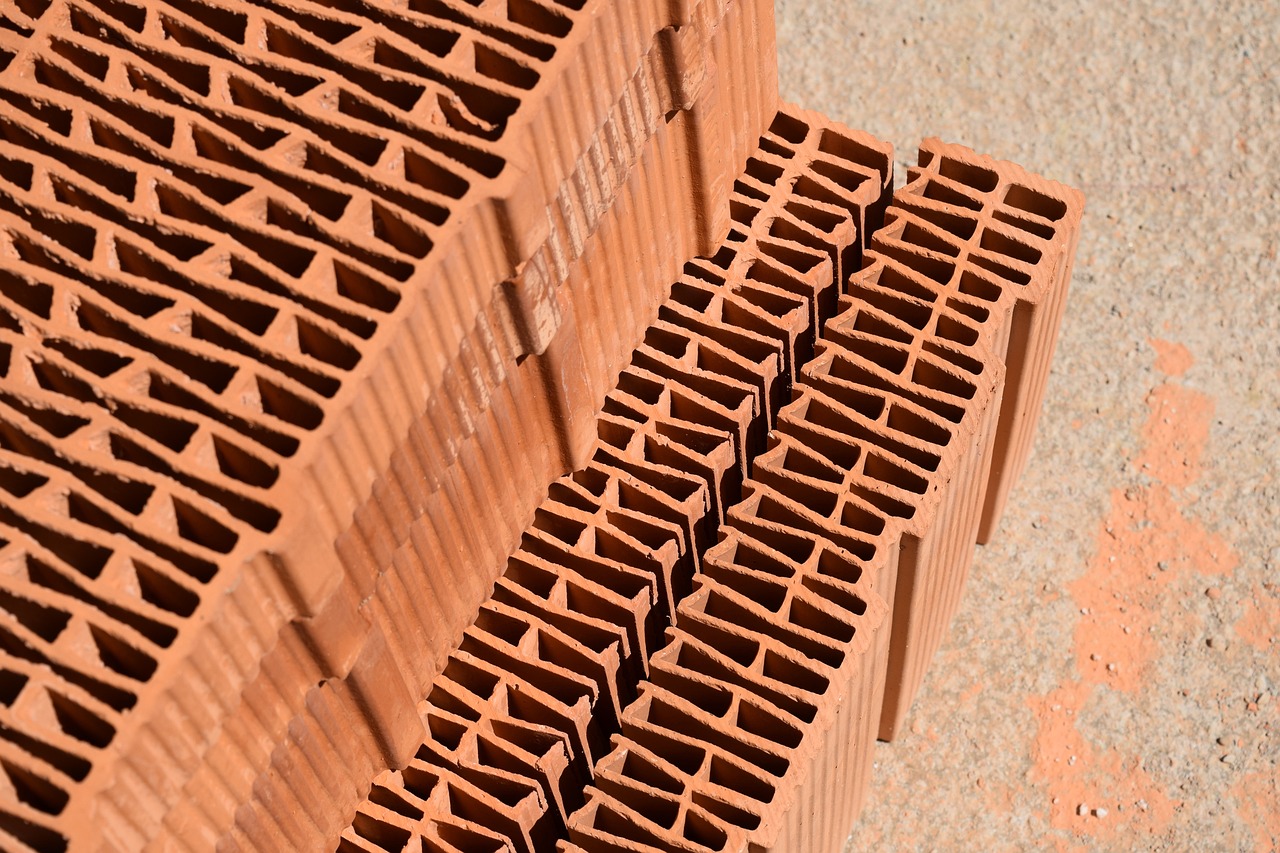Creating a Conceptual Painting: Step by Step Guide
This article explores the process of creating a conceptual painting, offering insights into the techniques, materials, and creative considerations that can enhance your artistic expression and final artwork. Conceptual painting is more than just putting paint on a canvas; it's about conveying ideas, emotions, and experiences through visual means. The journey from thought to canvas can be both thrilling and daunting, but with the right approach, you can transform your ideas into stunning visual representations.
Conceptual art is a fascinating realm that prioritizes the idea behind the artwork over its aesthetic appeal. It challenges traditional notions of art and invites viewers to engage with the concept rather than simply admire the visual. Historically, conceptual art emerged in the 1960s and 70s, pushing boundaries and redefining what art could be. Artists like Marcel Duchamp and Sol LeWitt paved the way for this movement, emphasizing that the concept is the core of the artwork. Understanding this foundational principle is crucial as you embark on your own conceptual painting journey.
Choosing a theme is like picking the heart of your painting—it sets the tone and direction for your creative process. It's essential to select a theme that not only resonates with your artistic vision but also reflects your personal experiences. Start by brainstorming ideas that evoke strong emotions or provoke thought. Ask yourself questions like, "What message do I want to convey?" or "What experiences have shaped my perspective?" This reflective process can lead to powerful themes that will guide your painting.
Once you've settled on a theme, diving deep into research can significantly enhance your understanding and execution. Gathering information can provide context and layers to your artwork. Explore books, articles, or even documentaries related to your theme. Consider visiting galleries or museums to see how other artists have interpreted similar subjects. This research phase is vital—it’s like laying the groundwork for a solid building. The more you know, the richer your painting will be.
To create a truly engaging conceptual painting, examining your theme from various perspectives is essential. It’s easy to get stuck in a single viewpoint, but by looking at your theme through different lenses, you can uncover deeper insights. For instance, if your theme is about identity, consider how it varies across cultures, ages, or personal experiences. This multifaceted approach not only enriches your understanding but also adds complexity to your artwork.
Symbols are the language of conceptual art. They can convey complex ideas and emotions in a single image. Identifying meaningful symbols that relate to your theme can enhance the narrative of your painting. For example, if your theme revolves around freedom, you might incorporate symbols like birds or open skies. Take the time to think about what symbols resonate with you personally and how they can be woven into your artwork.
Before you dive into painting, sketching your concepts is a crucial step. It’s like creating a roadmap for your artistic journey. Sketching helps you visualize your ideas and refine them before committing to the canvas. Use this phase to experiment with composition, color palettes, and the placement of symbols. Remember, your sketches don’t have to be perfect; they are merely a tool to help you clarify your vision.
Choosing the right materials is essential for achieving your desired effect in a conceptual painting. The medium you select can dramatically alter the mood and message of your artwork. Consider whether you want to work with acrylics, oils, or mixed media. Each medium has its own characteristics and can evoke different emotions. For instance, acrylics dry quickly and allow for vibrant colors, while oils offer a rich depth but require longer drying times. Understanding these nuances will help you make informed decisions about your materials.
Different mediums can drastically change the outcome of your painting. Here’s a brief overview of some popular options:
| Medium | Characteristics | Best For |
|---|---|---|
| Acrylics | Fast drying, vibrant colors, water-soluble | Bold, expressive works |
| Oils | Slow drying, rich texture, blendable | Detailed, layered paintings |
| Mixed Media | Combines various materials, versatile | Experimental and innovative designs |
A well-organized workspace can significantly enhance creativity and productivity. Set up an inspiring and functional environment for your painting process. Make sure you have good lighting, comfortable seating, and easy access to your materials. A clutter-free space allows your mind to focus on your art rather than distractions. Consider adding personal touches, like inspirational quotes or images, to keep your creative juices flowing.
Q: What is conceptual painting?
A: Conceptual painting emphasizes the idea behind the artwork rather than its aesthetic value. It invites viewers to engage with the concept and meaning of the piece.
Q: How do I choose a theme for my painting?
A: Consider what resonates with you personally. Brainstorm ideas based on your experiences, emotions, and interests.
Q: Why is research important in creating a conceptual painting?
A: Research enhances your understanding of the theme, providing context and depth that can enrich your artwork.
Q: What materials should I use for conceptual painting?
A: The choice of materials depends on your desired effect. Common options include acrylics, oils, and mixed media.

Understanding Conceptual Art
Conceptual art is a fascinating realm of artistic expression that prioritizes ideas over traditional aesthetic values. Unlike conventional art forms that often focus on visual appeal, conceptual art invites the viewer to engage with the underlying message, prompting them to think critically about the work. This approach emerged in the mid-20th century, challenging the notion that art must be beautiful or skillfully executed. Instead, it posits that the concept behind the piece is what truly matters.
The roots of conceptual art can be traced back to movements like Dadaism and Surrealism, which sought to break free from established norms. Artists such as Marcel Duchamp, with his iconic "Fountain," demonstrated that everyday objects could be transformed into art through the mere act of presentation. This revolutionary idea paved the way for a new generation of artists to explore themes that resonate on a deeper level, often addressing social, political, or personal issues.
One of the significant aspects of conceptual art is its ability to provoke thought and discussion. When you encounter a conceptual piece, you're not just looking at a painting or sculpture; you're invited to unravel a narrative or question societal norms. The significance lies in the interpretation, allowing each viewer to derive their own meaning. This is where the magic happens—art becomes a dialogue between the creator and the audience.
In creating a conceptual painting, understanding this foundation is crucial. It influences every decision you make, from the theme you choose to the symbols you incorporate. Consider the following key elements of conceptual art:
- Intent: What message do you want to convey?
- Context: How does your work relate to the world around you?
- Engagement: How do you want the audience to interact with your piece?
As you embark on your journey to create a conceptual painting, keep in mind that the process is as important as the final product. Each brushstroke and choice of color should serve to enhance the concept you're exploring. This artistic philosophy encourages you to think outside the box and redefine what art means to you.
Ultimately, conceptual art is about pushing boundaries and questioning the status quo. It empowers artists to express their thoughts and feelings in innovative ways, making it a vital part of contemporary art discourse. So, as you dive into your own conceptual painting, remember: it's not just about what you create, but the ideas and conversations that arise from it.

Choosing Your Theme
Choosing a theme for your conceptual painting is like picking the right ingredients for a gourmet dish; it sets the stage for everything that follows. It's not just about what looks good on the canvas, but about what resonates with you on a deeper level. Think of your theme as the heart of your artwork, the pulse that gives it life. So, how do you go about selecting a theme that truly reflects your artistic vision? Let's dive into some effective strategies to brainstorm and refine your ideas.
First off, consider your personal experiences and the emotions you want to convey. What stories do you want to tell? Your life is a treasure trove of inspiration, filled with moments that evoke strong feelings. Whether it’s joy, sorrow, love, or loss, tapping into these emotions can lead to a powerful theme. For instance, if you’ve recently experienced a significant life change, that could be a rich source of inspiration. Remember, the best themes often come from genuine feelings and experiences.
Another great way to explore potential themes is through free writing. Set a timer for 10-15 minutes and write down whatever comes to mind without filtering or editing. This stream-of-consciousness approach can reveal hidden ideas and concepts that you might not have considered. Afterward, go through your notes and highlight any recurring themes or ideas that stand out. This process can be enlightening, revealing connections between your thoughts that could serve as the foundation for your painting.
Once you've gathered some ideas, it's crucial to research your potential themes. This doesn’t mean you have to become an expert overnight, but having a solid understanding of your chosen subject can significantly enhance your artwork. Dive into books, articles, or documentaries related to your theme. For example, if your theme revolves around climate change, familiarize yourself with its impacts, statistics, and personal stories. This knowledge will not only enrich your painting but will also allow you to communicate your message more effectively.
Moreover, it’s essential to explore your theme from different perspectives. Think about how various cultures, historical contexts, or personal experiences might interpret your theme. This exploration can lead to a more nuanced understanding and can ultimately create a more impactful piece. For instance, if your theme is about urban life, consider how it affects different demographics—what does it feel like for a child versus an elderly person? This multifaceted approach can add depth to your artwork, making it resonate with a broader audience.
As you refine your theme, consider identifying key symbols that can visually represent your ideas. Symbols are powerful tools in conceptual art; they can convey complex concepts in a single image. For example, if your theme is about freedom, you might use birds or open skies as symbols. Think about what resonates with you and how these symbols can enhance the narrative of your painting. The right symbols can transform your artwork from a simple depiction into a profound statement.
In summary, choosing your theme is a crucial step in the conceptual painting process. By reflecting on your personal experiences, conducting research, exploring various perspectives, and identifying key symbols, you can select a theme that not only speaks to you but also captivates your audience. Remember, the theme is the backbone of your artwork—take your time to choose wisely, and let it guide your creative journey.

Researching Your Theme
Researching your theme is like laying the groundwork for a sturdy house; without a solid foundation, the structure can crumble. When it comes to conceptual painting, understanding your theme deeply not only informs your artistic choices but also enhances the emotional and intellectual impact of your work. This process begins with asking yourself some key questions: What do I want to express? What emotions do I want to evoke? By digging into these inquiries, you can uncover layers of meaning that will enrich your painting.
One effective method for researching your theme is to immerse yourself in relevant literature. Books, articles, and essays on your chosen subject can provide valuable insights and different perspectives. For instance, if your theme revolves around environmental issues, reading scientific studies, personal narratives, and historical accounts can give you a well-rounded view. Additionally, consider exploring visual sources such as photographs, documentaries, and films that resonate with your theme. These resources can spark inspiration and help you visualize how to translate your ideas onto canvas.
Furthermore, engaging with other artists can be a game-changer. Attend workshops, join online forums, or participate in local art groups where you can discuss your theme and gather feedback. This interaction not only broadens your perspective but also fosters a sense of community. Here are a few ways to effectively research your theme:
- Literature Review: Read books and articles related to your theme to gather insights and historical context.
- Visual Exploration: Watch documentaries, view art exhibitions, or browse online galleries to see how others interpret similar themes.
- Engage with Peers: Join workshops or online forums to discuss your theme and gather diverse viewpoints.
As you conduct your research, take notes and jot down any ideas that come to mind. This can be in the form of a journal or a digital document where you can freely express your thoughts and feelings related to the theme. Remember, the goal is to gather as much information as possible, which will serve as a rich tapestry from which you can draw when creating your painting. Think of it as collecting seeds that you will later plant in the soil of your canvas, nurturing them into a full-grown artwork.
Lastly, don’t forget to reflect on your personal experiences related to the theme. Your unique perspective is what will set your conceptual painting apart from others. By blending your research with your personal narrative, you create a work that is not only visually compelling but also deeply meaningful. So, dive into the depths of your theme, explore its nuances, and let your findings guide your artistic journey.
Q: How much research should I do before starting my painting?
A: The amount of research varies depending on your theme. Aim for a balance; enough to inform your work but not so much that it stifles your creativity. Trust your instincts!
Q: Can I use personal experiences as part of my theme?
A: Absolutely! Personal experiences can provide a rich layer of meaning and authenticity to your conceptual painting.
Q: What if I feel overwhelmed by the research process?
A: Take breaks and allow yourself to step back. Sometimes, a little distance can help clarify your thoughts and inspire new ideas.

Exploring Different Perspectives
When it comes to creating a conceptual painting, can be the key to unlocking deeper meanings and richer narratives within your artwork. Imagine standing in a room filled with mirrors; each reflection offers a unique angle, revealing something new each time. This analogy holds true for your theme as well. By examining your subject matter from multiple viewpoints, you can enrich your understanding and ultimately, your artistic expression.
One effective technique to explore different perspectives is to ask questions. What does your theme mean to you? How might it be perceived by others? Consider the following questions as you delve into your theme:
- What emotions does this theme evoke?
- How does this theme relate to societal issues?
- What personal experiences can I draw upon to give this theme depth?
As you ponder these questions, it can be helpful to engage with others. Discussing your theme with friends, family, or fellow artists can uncover insights that you may not have considered. Sometimes, a simple conversation can illuminate a new angle that transforms your approach entirely. Think of it as gathering a team of detectives, each bringing their unique expertise to solve a complex case.
Another strategy is to incorporate various art forms into your exploration. For instance, if your theme revolves around nature, you might look at photography, poetry, or even music to see how different artists interpret similar ideas. This cross-disciplinary approach can inspire you to think outside the box and incorporate elements that resonate with your theme in unexpected ways. You could create a mood board filled with images, quotes, and sounds that evoke the essence of your theme, serving as a constant source of inspiration throughout your painting process.
Additionally, consider the historical and cultural contexts of your theme. Researching how different cultures and eras have interpreted similar subjects can provide a wealth of ideas and symbols that might resonate with your own vision. For example, if your theme is about love, looking at how love has been depicted in various cultures—from ancient mythology to contemporary art—can spark new ideas and techniques for your conceptual painting.
In summary, exploring different perspectives is not just a step in the painting process; it’s a journey that can lead to profound discoveries about your theme and yourself as an artist. By asking questions, engaging with others, incorporating various art forms, and researching historical contexts, you can create a conceptual painting that resonates on multiple levels and invites viewers to engage with your work in a meaningful way.
Q: How can I find different perspectives on my theme?
A: Engage in discussions with others, research different cultures, and explore various art forms related to your theme to uncover new angles.
Q: Is it important to consider the audience's perspective?
A: Absolutely! Understanding how your audience might interpret your work can help you convey your message more effectively and create a connection with viewers.
Q: Can I change my perspective during the painting process?
A: Yes! Artistic processes are fluid, and it's perfectly fine to shift your perspective as you create. Embrace the evolution of your ideas.

Identifying Key Symbols
When it comes to creating a conceptual painting, the use of symbols can transform your artwork from mere visuals into a profound narrative. Symbols serve as the language of your painting, conveying deeper meanings that resonate with viewers on multiple levels. So, how do you go about identifying these key symbols? Let’s dive into this captivating process!
First and foremost, consider the theme of your artwork. The symbols you choose should align with your central idea, acting as visual metaphors that enhance the concept. For instance, if your theme revolves around freedom, you might incorporate symbols like birds, open skies, or broken chains. These elements not only beautify your painting but also communicate the essence of your message. It’s like choosing the right words to express your thoughts; the more fitting they are, the clearer your message becomes!
Next, think about your personal experiences and emotions. Symbols can be deeply personal and may stem from your own journey. Reflect on your life and consider what objects, colors, or images hold significant meaning for you. Perhaps a specific flower reminds you of a loved one, or a certain color evokes a feeling of nostalgia. By embedding these personal symbols into your painting, you create a connection with the audience that is both unique and relatable.
Moreover, it’s essential to research existing symbols and their meanings. Different cultures and societies attribute various meanings to symbols, and understanding these can enrich your artwork. For example, in many cultures, the lotus flower symbolizes purity and rebirth, while in others, the owl represents wisdom. By integrating symbols with rich backgrounds, you can add layers of meaning to your painting, inviting viewers to explore and interpret your work in their own way.
As you identify your symbols, consider creating a visual reference board. This can be a physical or digital collage of images, colors, and symbols that inspire you. By surrounding yourself with these elements, you can better visualize how they might fit into your painting. Additionally, it can serve as a source of inspiration during the creative process, reminding you of the narrative you aim to convey.
Lastly, don’t hesitate to experiment with abstract representations of your symbols. Sometimes, the most powerful symbols aren’t literal but are instead conveyed through shapes, colors, and textures. For example, a swirling storm might represent chaos or turmoil, while soft, flowing lines could symbolize peace and tranquility. Embrace the freedom of abstraction, allowing your symbols to evolve as you paint, transforming into something uniquely yours.
In conclusion, identifying key symbols in your conceptual painting is a journey of exploration and self-discovery. By aligning your symbols with your theme, drawing from personal experiences, researching cultural meanings, creating visual references, and embracing abstraction, you can create a rich tapestry of meaning that captivates and resonates with your audience. Remember, every symbol you choose adds a brushstroke to the story you wish to tell!
- What are symbols in conceptual art? Symbols are visual elements that represent ideas, emotions, or themes within a piece of artwork.
- How can I find symbols that resonate with me? Reflect on your personal experiences, conduct research on cultural meanings, and consider keeping a visual reference board for inspiration.
- Can I use abstract symbols in my painting? Absolutely! Abstract representations can convey powerful messages and emotions, often allowing for a broader interpretation.

Sketching Your Ideas
Before you plunge headfirst into the vibrant world of paint and canvas, it’s crucial to take a step back and sketch your ideas. Think of sketching as the foundation of a house; without a solid base, everything else can crumble. This initial phase not only allows you to visualize your concepts but also serves as a playground for your imagination. It’s your chance to experiment, play, and explore the infinite possibilities that your theme presents.
As you begin sketching, don’t be afraid to let your pencil dance across the page. The beauty of sketching lies in its freedom; it’s less about perfection and more about expression. Start with rough outlines and shapes that embody your ideas. You might find that your initial concept evolves as you draw. This is where the magic happens! Embrace the unexpected twists and turns your sketches may take. Remember, even the greatest artists started with a simple line.
To enhance your sketching process, consider the following techniques:
- Thumbnail Sketches: Create small, quick sketches to explore multiple ideas without investing too much time in any single one. These thumbnails can help you identify the strongest compositions.
- Gesture Drawing: Focus on capturing the movement and essence of your theme. This technique is about speed and flow, allowing you to express emotions and dynamics in your artwork.
- Refinement: Once you have a few solid ideas, choose the ones that resonate most with you. Refine these sketches by adding details and exploring different compositions.
Moreover, don’t hesitate to use reference images or mood boards to inspire your sketches. Gathering visual references can spark ideas and provide context for your theme. You might find yourself drawing from different sources, mixing and matching elements that speak to you. This blending of influences can lead to truly unique and personal artwork.
As you refine your sketches, consider the composition carefully. Think about how the elements of your painting will interact with one another. Ask yourself questions like: What emotions do I want to evoke? or How can I use space to enhance my theme? These inquiries will guide your hand as you sketch, ensuring that every line serves a purpose.
Finally, remember that sketching is not just a preliminary step; it’s an integral part of your artistic journey. It’s a time to explore, make mistakes, and learn from them. Embrace the process, and don’t be afraid to revisit and revise your sketches as your ideas evolve. Each sketch is a stepping stone toward your final masterpiece, and every stroke brings you closer to realizing your artistic vision.
Q: How detailed should my sketches be?
A: Your sketches can be as detailed or as loose as you prefer. The goal is to capture your ideas and emotions, so focus on what feels right for your project.
Q: Can I use digital tools for sketching?
A: Absolutely! Digital sketching offers flexibility and allows you to easily manipulate your ideas. Use whatever tools you feel most comfortable with.
Q: What if I don’t like my sketches?
A: It’s perfectly normal to feel dissatisfied with your sketches. Use them as a learning opportunity. Analyze what you don’t like and adjust your approach in subsequent sketches.

Selecting Materials
When it comes to creating a conceptual painting, the materials you choose can have a monumental impact on your artistic expression and the overall outcome of your work. Just like a chef selects the finest ingredients to create a mouthwatering dish, an artist must carefully consider their supplies to convey the intended message and evoke the desired emotions. So, let's dive into the essential materials that can elevate your conceptual painting to new heights.
First off, the medium you select plays a crucial role in how your ideas are translated onto the canvas. Whether you opt for acrylics, oils, watercolors, or mixed media, each medium has its unique properties that can either enhance or hinder your vision. For instance, acrylic paints dry quickly and allow for vibrant colors, making them ideal for bold, expressive works. On the other hand, oil paints offer a rich depth and a longer drying time, which can be beneficial for blending and creating subtle transitions. Understanding these characteristics will help you make informed decisions that align with your artistic goals.
Next, let's talk about tools. Brushes, palette knives, and sponges are just a few examples of the tools that can shape your painting experience. A variety of brush sizes and shapes can help you achieve different textures and effects, from fine details to broad strokes. For instance, a fan brush can create lovely foliage effects, while a flat brush is perfect for smooth, even applications of paint. Investing in quality tools will not only enhance your technique but also make the painting process more enjoyable.
In addition to medium and tools, the surface you paint on is equally important. Canvases, wood panels, and paper all provide different textures and absorbency levels, which can influence your painting's final appearance. A stretched canvas offers a sturdy base that can withstand heavy applications of paint, while watercolor paper is designed to handle wet mediums without warping. When selecting a surface, consider how it will interact with your chosen medium and the overall effect you want to achieve.
To help you visualize the differences in materials, here’s a simple comparison table:
| Medium | Characteristics | Best For |
|---|---|---|
| Acrylics | Fast-drying, vibrant colors | Bold, expressive works |
| Oils | Rich depth, slow drying time | Subtle blending and detailed work |
| Watercolors | Translucent, fluid | Soft, delicate effects |
| Mixed Media | Combines various materials | Innovative and experimental art |
Lastly, don’t overlook the importance of accessories. Items like palettes, easels, and aprons can make your painting experience smoother and more organized. A sturdy easel can provide the right angle for your work, while a well-organized palette allows for easy access to your colors. Remember, a clutter-free workspace can significantly enhance your creativity and focus.
In conclusion, selecting the right materials for your conceptual painting is not just about practicality; it’s about aligning your tools with your vision. By understanding the characteristics of different mediums, tools, surfaces, and accessories, you can create a harmonious environment that fosters creativity and expression. So, take your time in choosing your materials, and don’t hesitate to experiment. After all, the journey of creating art is just as important as the final masterpiece!
Q: What is the best medium for beginners?
A: Acrylics are often recommended for beginners due to their ease of use, quick drying time, and versatility.
Q: Can I mix different mediums in one painting?
A: Yes, mixing mediums can lead to unique effects, but be sure to understand how they interact with each other to avoid any issues.
Q: How do I choose the right surface for my painting?
A: Consider the medium you are using and the effect you want to achieve. Each surface has its own properties that will affect the final result.

Understanding Different Mediums
When it comes to conceptual painting, the medium you choose can significantly impact the final outcome of your artwork. Each medium offers unique characteristics that can either enhance or limit your creative expression. Understanding these differences is crucial for artists who want to convey their ideas effectively. So, what are the primary mediums available, and how do they influence your work? Let's dive into some of the most popular options.
Acrylic paint, for instance, is a versatile medium favored by many artists for its quick-drying properties and vibrant colors. It allows for a range of techniques, from thin washes to thick impasto, making it ideal for both detailed and abstract work. If you're looking to experiment with layering, acrylics can be your best friend. However, it’s essential to note that once acrylics dry, they become water-resistant, which can be a double-edged sword depending on your creative process.
On the other hand, oil paint is renowned for its rich texture and depth of color. Unlike acrylics, oils take much longer to dry, allowing artists to work more slowly and blend colors seamlessly. This quality can be particularly beneficial when creating subtle gradients or intricate details. However, the long drying time can also be a drawback for those who prefer a quicker workflow. It’s like comparing a leisurely stroll through a beautiful garden to a sprint through a bustling market—both have their charm, but they offer entirely different experiences.
Mixed media is another exciting approach that combines various materials and techniques. By integrating different mediums—such as collage, ink, or even found objects—you can create a rich tapestry of textures and layers that add depth to your conceptual painting. This method allows for a more personal expression, as you can incorporate elements that resonate with your theme in unique ways. Think of it as crafting a delicious dish where each ingredient contributes to the overall flavor, making your artwork a feast for the senses.
| Medium | Characteristics | Best For |
|---|---|---|
| Acrylic | Quick-drying, versatile, vibrant colors | Layering, abstract work |
| Oil | Rich texture, slow drying, deep colors | Blending, detailed work |
| Mixed Media | Combines various materials, unique textures | Personal expression, thematic depth |
In conclusion, understanding the different mediums available to you is crucial for enhancing your conceptual paintings. Each medium has its own set of advantages and challenges, and the choice ultimately depends on your artistic vision and the message you wish to convey. So, whether you lean towards the fast-paced world of acrylics, the luxurious feel of oils, or the experimental nature of mixed media, embrace the medium that speaks to you. After all, the medium is not just a tool; it’s an integral part of your artistic voice.
- What is the best medium for beginners? Acrylics are often recommended for beginners due to their ease of use and quick drying time.
- Can I mix different mediums in one painting? Absolutely! Mixed media allows for creative freedom, so feel free to experiment.
- How do I choose the right medium for my concept? Consider the message you want to convey and how each medium can enhance that idea.

Preparing Your Workspace
Creating a conceptual painting is not just about the brushstrokes and colors; it's also about the environment in which you create. A well-prepared workspace can be the difference between a chaotic experience and a productive, inspiring one. Think of your workspace as a canvas itself, where the surroundings can either enhance or hinder your creative flow. So, how do you set up a space that fuels your imagination and allows you to express your artistic vision freely?
First and foremost, consider lighting. Natural light is a painter's best friend, illuminating your colors and providing a true sense of how they will look in the real world. If possible, position your workspace near a window. If that’s not an option, invest in high-quality artificial lighting that mimics daylight. This can help you avoid unpleasant surprises when your artwork is viewed in different lighting conditions.
Next, think about organization. A cluttered space can lead to a cluttered mind. Take the time to organize your materials neatly. Use shelves, bins, and containers to store your paints, brushes, and tools. You might even consider a rolling cart for easy access to frequently used items. The goal is to create an environment where everything has its place, allowing you to focus on the creative process rather than searching for that elusive brush or color.
Another important aspect is inspiration. Surround yourself with things that motivate you. This could be art books, prints of your favorite artists, or even personal photographs that resonate with your conceptual theme. Create a mood board where you can pin ideas, colors, and images that inspire your current project. Having these visual cues around you can spark creativity and keep your mind engaged.
Don’t forget about comfort. Since you’ll likely spend long hours in your workspace, make sure it’s comfortable. Invest in a good chair that supports your back, and consider a standing desk if you prefer to work while standing. Also, think about the temperature and ventilation. A space that is too hot or too cold can be distracting, so adjust it to your liking.
Lastly, consider the sound environment. Some artists thrive in silence, while others prefer background music or ambient sounds. Create a playlist that fuels your creativity or find a quiet space where you can think without distractions. You might even enjoy incorporating sounds that relate to your theme—like nature sounds for a piece inspired by the outdoors.
In summary, preparing your workspace is a crucial step in the creative process. By focusing on lighting, organization, inspiration, comfort, and sound, you can create an environment that not only enhances your productivity but also inspires your conceptual painting journey.
- What materials do I need to prepare my workspace? You’ll need storage solutions for your art supplies, good lighting, a comfortable chair, and any additional items that inspire you.
- How can I make my workspace more inspiring? Surround yourself with artwork, books, and images that resonate with you. Consider creating a mood board to visualize your ideas.
- Is it necessary to have a dedicated art space? While it's not necessary, having a dedicated space can help you focus and immerse yourself in your creative process.
Frequently Asked Questions
- What is conceptual art?
Conceptual art is all about the idea behind the artwork rather than its aesthetic appeal. It challenges traditional notions of art by focusing on concepts and messages instead of just visual beauty. Think of it as art that makes you think, rather than just something pretty to look at!
- How do I choose a theme for my conceptual painting?
Selecting a theme is crucial! Start by brainstorming ideas that resonate with you personally. Consider your experiences, interests, and what messages you want to convey. It’s like picking a story to tell—make sure it’s one that you’re passionate about!
- Why is research important for my theme?
Research can deepen your understanding of the theme you choose. It’s like gathering tools before starting a project; the more you know, the better equipped you are to express your ideas. Plus, it can spark new inspirations and perspectives!
- What role do symbols play in conceptual painting?
Symbols are like the secret language of your artwork! They convey deeper meanings and add layers to your painting. Identifying and incorporating meaningful symbols can help communicate your theme more effectively, making your artwork resonate with viewers.
- How can I improve my sketching skills?
Practice makes perfect! Start by sketching regularly, focusing on different aspects of your ideas. Use quick sketches to capture your thoughts and refine them over time. Think of sketching as your artistic warm-up—get those creative juices flowing before diving into the final piece!
- What materials should I use for conceptual painting?
The materials you choose can significantly affect your artwork! Experiment with different mediums like acrylics, oils, or mixed media to see which best suits your vision. It’s like choosing the right ingredients for a recipe—each one brings its own flavor to the final dish!
- How do I set up my workspace for painting?
A well-organized workspace can boost your creativity! Make sure it’s clutter-free and filled with inspiring elements. Think of your workspace as your creative sanctuary—set it up in a way that makes you feel energized and ready to create!



















